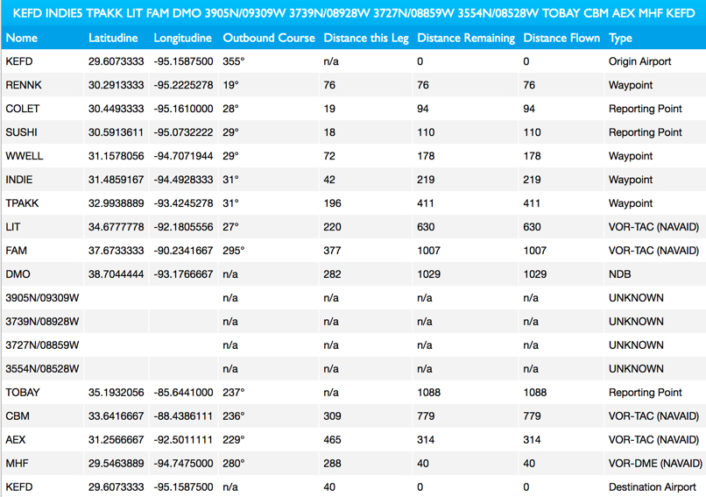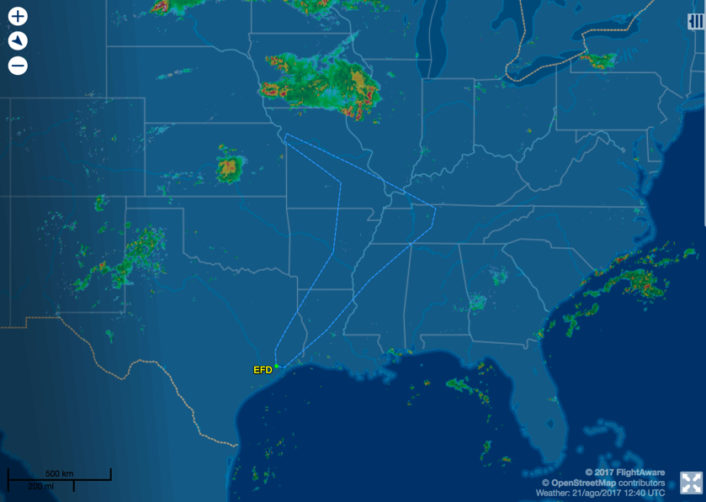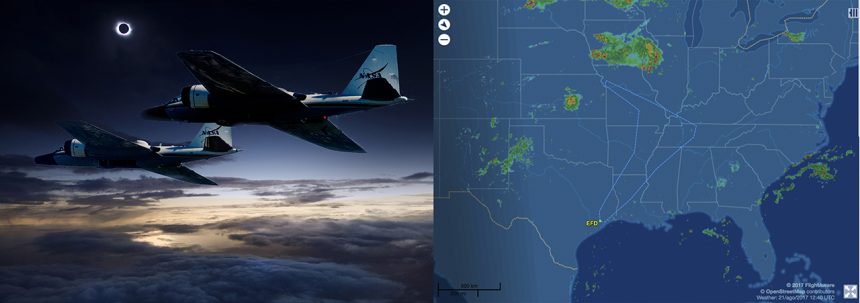NASA is about to launch two retrofitted WB-57F aircraft to follow the shadow of the moon. The last of a long series of interesting missions…
NASA still operates three WB-57Fs, configured for air sampling and the other for photography, radar and thermal recce. The first two, NASA926 and 928 have been flying research missions since the early ’60s, whereas NASA927 is a more recent addition to the fleet, having joined NASA Johnson Space Center (JSC) in Houston, Texas, in 2013.
Based at Ellington Field, Texas, they are often deployed to different bases, both at home and abroad; to undertake missions in support of scientific projects (focusing on hurricanes, radiation impact on clouds, atmospheric data gathering, tropical storm generation analysis, and so on).
For instance, on Aug. 21, 2017, the total solar eclipse that for most of the observers will last less than two and half minutes, for one team of NASA-funded scientists, will last over seven minutes. Indeed, the eclipse will be chased by two retrofitted WB-57F jet planes: NASA926 and NASA927.
According to NASA, Amir Caspi of the Southwest Research Institute in Boulder, Colorado, and his team will use two of NASA’s WB-57F research jets to observe the eclipse from twin telescopes mounted on the noses of the planes in order to capture the clearest images of the Sun’s outer atmosphere — the corona — to date and the first-ever thermal images of Mercury, revealing how temperature varies across the planet’s surface.
The two aircraft have filled a FPL to follow the route below:


“Due to technological limitations, no one has yet directly seen nanoflares, but the high-resolution and high-speed images to be taken from the WB-57F jets might reveal their effects on the corona. The high-definition pictures, captured 30 times per second, will be analyzed for wave motion in the corona to see if waves move towards or away from the surface of the Sun, and with what strengths and sizes,” says an official NASA release.
“The two planes, launching from Ellington Field near NASA’s Johnson Space Center in Houston will observe the total eclipse for about three and a half minutes each as they fly over Missouri, Illinois and Tennessee. By flying high in the stratosphere, observations taken with onboard telescopes will avoid looking through the majority of Earth’s atmosphere, greatly improving image quality. At the planes’ cruising altitude of 50,000 feet, the sky is 20-30 times darker than as seen from the ground, and there is much less atmospheric turbulence, allowing fine structures and motions in the Sun’s corona to be visible.
Images of the Sun will primarily be captured at visible light wavelengths, specifically the green light given off by highly ionized iron, superheated by the corona. This light is best for showing the fine structures in the Sun’s outer atmosphere. These images are complementary to space-based telescopes, like NASA’s Solar Dynamics Observatory, which takes images primarily in ultraviolet light and does not have the capacity for the high-speed imagery that can be captured aboard the WB-57F.”
Scientific research aside, NASA’s Canberras are also involved in some “special operations” every now and then.
For instance, in 2007 there were speculations and theories about the type of mission flown by the WB-57 in war zones fueled by pictures of the aircraft operating from Kandahar airfield in Afghanistan without the standard NASA logo and markings. Officially, the aircraft performed geophysical and remote sensing surveys as part of the U.S. aid to the Afghan reconstruction effort. The WB-57 collected AVIRIS (Airborne Visible Infra Red Imaging Spectrometer) data that could be analyzed to provide information on mineral assemblages that could aid in resource and hazards assessments.
More recently, the WB-57s have also carried BACN – Battlefield Airborne Communications Node payloads in Afghanistan, often testing fnew sensors and antennas used by the BACN to relay comms between command and control centers and ground troops located within valleys and ridges in the Afghan mountains during specific testing campaigns from Nellis Air Force Base, Nevada.
Surely, with up to 6,000-lb payload carried and a pallet system under the main fuselage area, this aircraft can fulfil a wide variety of special data gathering missions,.








